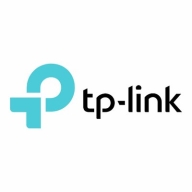

D-Link Wireless and Omada Access Points compete in the network hardware market. Omada Access Points have the upper hand due to their superior features, which favor them over D-Link's pricing and support.
Features: D-Link Wireless focuses on affordability and ease of use, offering basic capabilities ideal for small to mid-sized setups. Omada Access Points provide centralized management, scalability, and enhanced security, making them suitable for larger, more complex environments.
Room for Improvement: D-Link Wireless could enhance security features, expand scalability options, and improve integration with advanced technologies. Omada Access Points may benefit from more competitive pricing, better user interface experience, and faster feature updates to ensure alignment with evolving tech advancements.
Ease of Deployment and Customer Service: D-Link Wireless offers easy installation procedures and effective customer support, making setup straightforward. Omada Access Points have an efficient deployment model facilitated by centralized management, simplifying multi-access point setups with robust customer support for swift technical issue resolution.
Pricing and ROI: D-Link Wireless presents a budget-friendly solution with lower upfront costs, appealing to cost-sensitive consumers. Omada Access Points, while priced higher, promise higher ROI potential due to advanced features that justify the investment for businesses seeking reliable networking solutions.
| Product | Market Share (%) |
|---|---|
| Omada Access Points | 4.1% |
| D-Link Wireless | 2.1% |
| Other | 93.8% |


| Company Size | Count |
|---|---|
| Small Business | 8 |
| Midsize Enterprise | 7 |
| Large Enterprise | 2 |
| Company Size | Count |
|---|---|
| Small Business | 10 |
| Midsize Enterprise | 2 |
| Large Enterprise | 4 |
Omada access points provide a business-class wireless network solution that’s flexible, manageable, secure, and easy-to-deploy. The free EAP Controller software allows users to manage hundreds of EAPs at multiple sites, all from a single location. The ability to control, adjust and visualize the entire network from any connected PC makes centralized business Wi-Fi management more efficient than ever before. Omada EAPs also feature captive portal and advanced RF management functions, which make them ideal for demanding, high-traffic environments such as campuses, hotels, malls and offices.
We monitor all Wireless LAN reviews to prevent fraudulent reviews and keep review quality high. We do not post reviews by company employees or direct competitors. We validate each review for authenticity via cross-reference with LinkedIn, and personal follow-up with the reviewer when necessary.